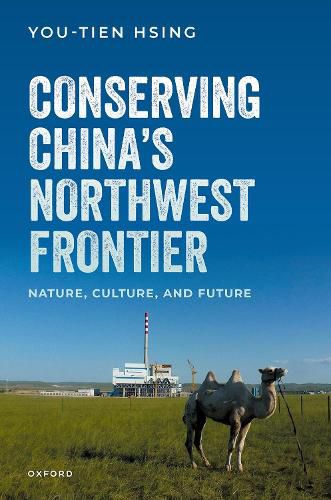Readings Newsletter
Become a Readings Member to make your shopping experience even easier.
Sign in or sign up for free!
You’re not far away from qualifying for FREE standard shipping within Australia
You’ve qualified for FREE standard shipping within Australia
The cart is loading…






China's immense northwest holds the key to the country's internal geopolitical and socioeconomic restructuring and global soft power today. In addition to hosting mega investments in energy, mining, infrastructure, and urban development, this resource-rich and ethnically diverse, yet under-studied, territory of 3.7 million square kilometres is leading China's rising developmental ethos of conserving nature and culture. Conserving China's Northwest Frontier offers nuanced accounts of the under-studied and often misunderstood region with fresh perspectives from the ground up. Derived from decade-long ethnography in three sites in Inner Mongolia Autonomous Region and Gansu province of the northwest from 2011 to 2022, this book also offers an unusually expansive coverage on three counts. Topically, it integrates both environmental and heritage conservation. Temporarily, it situates the contemporary conservation politics within geopolitical, ethnoterritorial, and environmental histories of the frontier region. Spatially, it connects multiple territorial scales from the global, national, regional, to the grassroots.
$9.00 standard shipping within Australia
FREE standard shipping within Australia for orders over $100.00
Express & International shipping calculated at checkout
China's immense northwest holds the key to the country's internal geopolitical and socioeconomic restructuring and global soft power today. In addition to hosting mega investments in energy, mining, infrastructure, and urban development, this resource-rich and ethnically diverse, yet under-studied, territory of 3.7 million square kilometres is leading China's rising developmental ethos of conserving nature and culture. Conserving China's Northwest Frontier offers nuanced accounts of the under-studied and often misunderstood region with fresh perspectives from the ground up. Derived from decade-long ethnography in three sites in Inner Mongolia Autonomous Region and Gansu province of the northwest from 2011 to 2022, this book also offers an unusually expansive coverage on three counts. Topically, it integrates both environmental and heritage conservation. Temporarily, it situates the contemporary conservation politics within geopolitical, ethnoterritorial, and environmental histories of the frontier region. Spatially, it connects multiple territorial scales from the global, national, regional, to the grassroots.